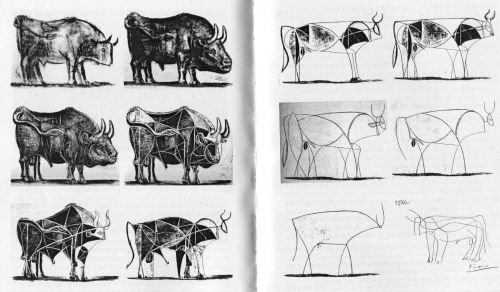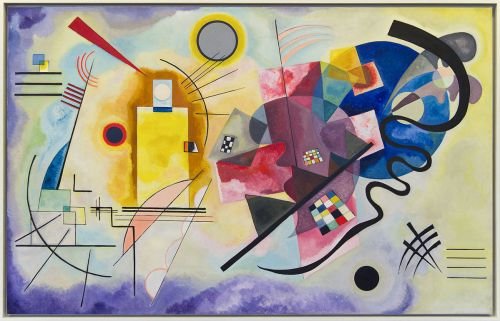Abstraction: What is it, Characteristics, Types
Abstraction
What is Abstraction:
Abstraction is an intellectual capacity that consists of separating an element from its context to analyze it and make a concept of it.
The word comes from the Latin abstrahĕre , which means 'to drag away', 'to separate' or 'to set aside'. In this way, abstraction means action and effect of putting something aside to understand it.
Abstraction is useful and indispensable for the formation of human knowledge. In effect, all knowledge goes through a process of abstraction that results in an "abstract concept", that is, an idea or notion.
Therefore, human beings are endowed with the capacity for abstraction , that is, the ability to select segments of reality and analyze them in an orderly and systematic way.
The human sciences, natural sciences, ideologies, religions, myths and the arts are the result of processes of abstraction of different types or degrees.
Abstraction in philosophy
For philosophy, abstraction is an intellectual operation that isolates a certain property of the object for study, analysis and reflection. The purpose of this mental operation is to understand the ultimate essence of things.
The Greek philosopher Aristotle proposed that any process of abstraction starts from the analysis of empirical data. According to the philosopher, three degrees of formal abstraction can be recognized.
First degree of abstraction (physics)
The first degree of abstraction is that which captures and analyzes the nature of the sensible order (matter), that is, those elements that "are" in their matter, which are called "mobile beings". In this way, it refers to the science of physics, but other natural sciences such as chemistry and biology also do the same.
Second degree of abstraction (mathematics)
The second degree of abstraction is the one that studies the "quantum entity", that is, the quantity. It dispenses with the "mobile entity" since, although it has a material reality, the "quantum entity" can be analyzed independently. The second degree of abstraction is characteristic of mathematical science.
Third degree of abstraction (philosophy)
The third degree of abstraction centers its focus on the entity itself, that is, on its "transcendental" dimension, and sets aside the "mobile entity" (matter) and the "quantum entity" (quantity). It includes entities that do not require matter to "be", although they may be endowed with one or they may be immaterial (immaterial should not be confused with spiritual). This degree refers to metaphysics and, therefore, to philosophy.
Abstraction in psychology
According to Jean Piaget, one can speak of two types of abstraction from the point of view of psychological processes: simple abstraction and reflective abstraction.
Simple abstraction is what allows the individual to extract information from objects, that is, from sensible reality.
Reflective abstraction is one that allows the subject to extract knowledge from their actions on sensible reality.
Abstraction in art
 Picasso. Sketches that reflect the process of graphic synthesis and abstraction of the bull motif.
Picasso. Sketches that reflect the process of graphic synthesis and abstraction of the bull motif.
In art, abstraction refers to the analysis and representation of the plastic elements of composition separated from the figurative referents. For example, the point, the line, the color, the geometry, the volume, the mass and the materials themselves.
Thus, abstract art renounces imitation and figurativeism and deals with essential forms, all of them abstracted from objects present in nature or sensible reality.
Abstraction in the plastic arts has existed since time immemorial. It can be seen, for example, in the use of geometric motifs from the Neolithic period.
However, as a movement, abstract art is founded in the contemporary era, resulting in a series of different currents, grouped in a category called abstractionism .
Types of abstraction
 Vasili Kandinski: Yellow, red and blue . 1925.
Vasili Kandinski: Yellow, red and blue . 1925.
Among the main types of abstraction in art we can list the following:
- Rayonism (1909) : represented by Mikhail Lariónov and Natalia Goncharova. deals with the plastic transcription of the luminous phenomenon.
- Lyrical abstraction (1910) : represented by Vasili Kandinski. Use plastic elements with compositional freedom with an emphasis on the harmony between the elements.
- Constructivism (1914) : represented by El Lisitsky. It incorporates spatial geometry as well as modern tools, techniques and materials.
- Suprematism (1915) : represented by Malevich. He approaches composition through flat geometry.
- Neoplasticism (1917) : represented by Piet Mondrian. Limit plastic resources to the use of straight lines and primary colors.
- Abstract Expressionism (c. 1940) : represented by Jackson Pollok. He conceives the canvas as a non-deliberate expression of the artist through automatism and non-figurative improvisation.
- Informalism (c. 1950) : represented by Henri Michaux and Antoni Tàpies. Add a concern for materials to the automatism and improvisation of abstract expressionism.
Recommended content
- 10 Characteristics of Self-Esteem
- 10 Characteristics of an Autobiography
- 10 Characteristics of the Autarchy
- 36 types of communication › What is it, Characteristics, Verbal, Non-verbal
- 5 examples of social equality
- 50 examples of hyperbole › What is it, Characteristics, Poetry and Narrative
- 6 differences between physical and moral person › What is it, Physical and Moral Characteristics
- 61 analogy examples › What is, Characteristics, Metaphors
- 7 universal values for a better world
- Amphibology » What it is, Characteristics, Concepts